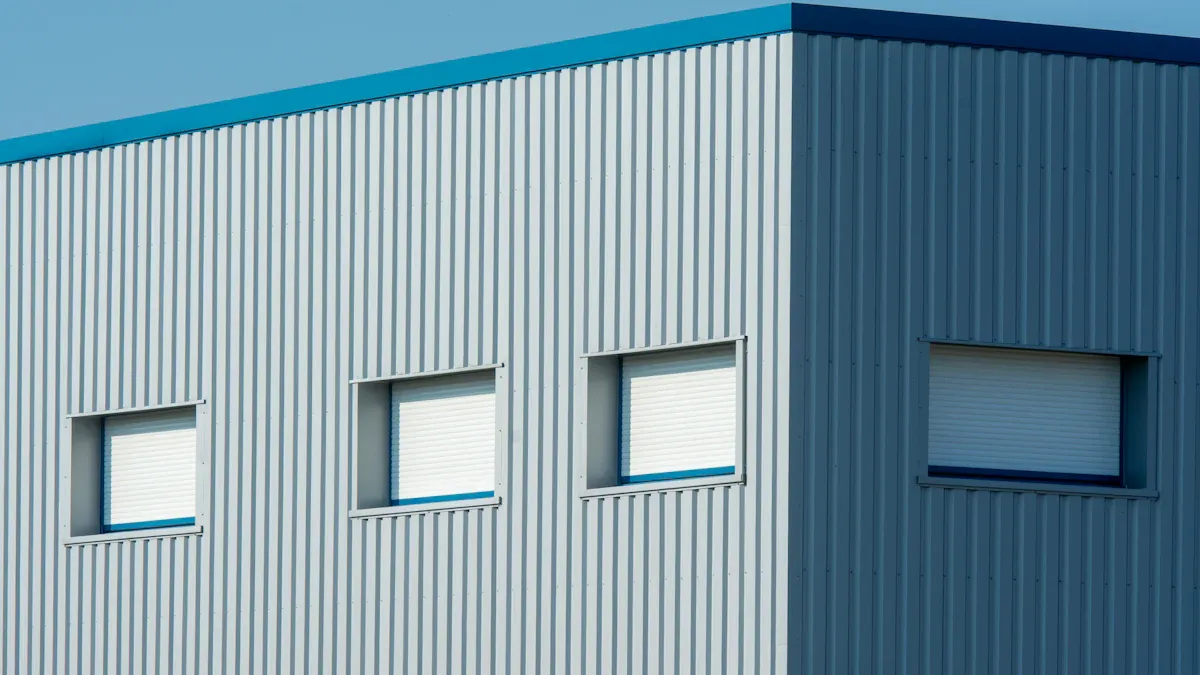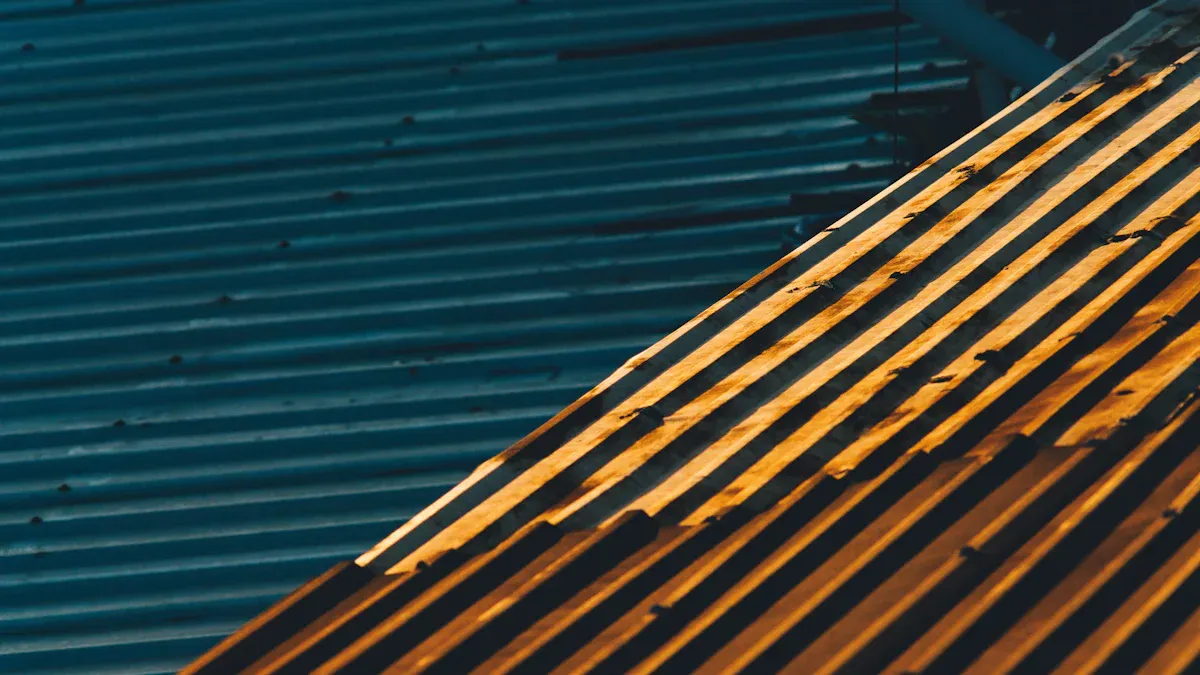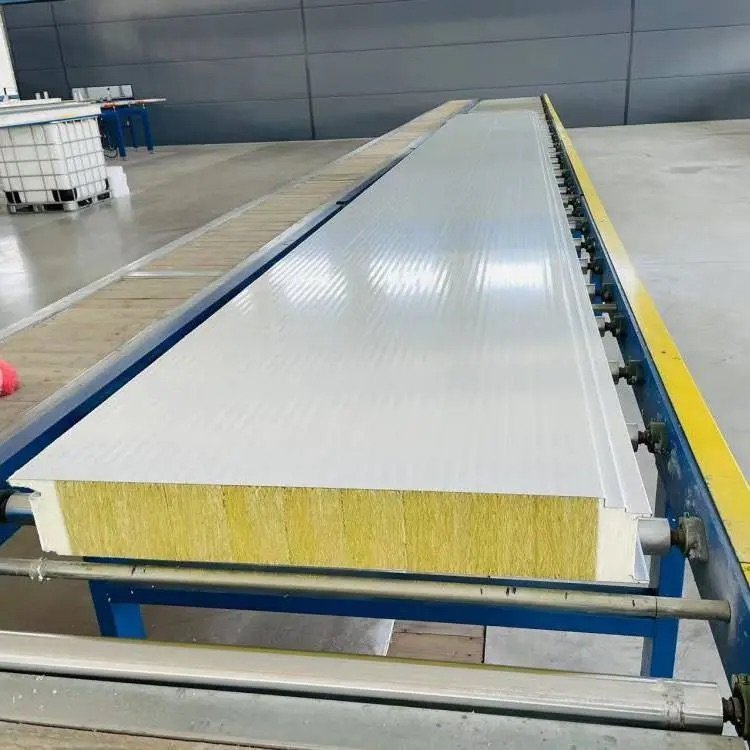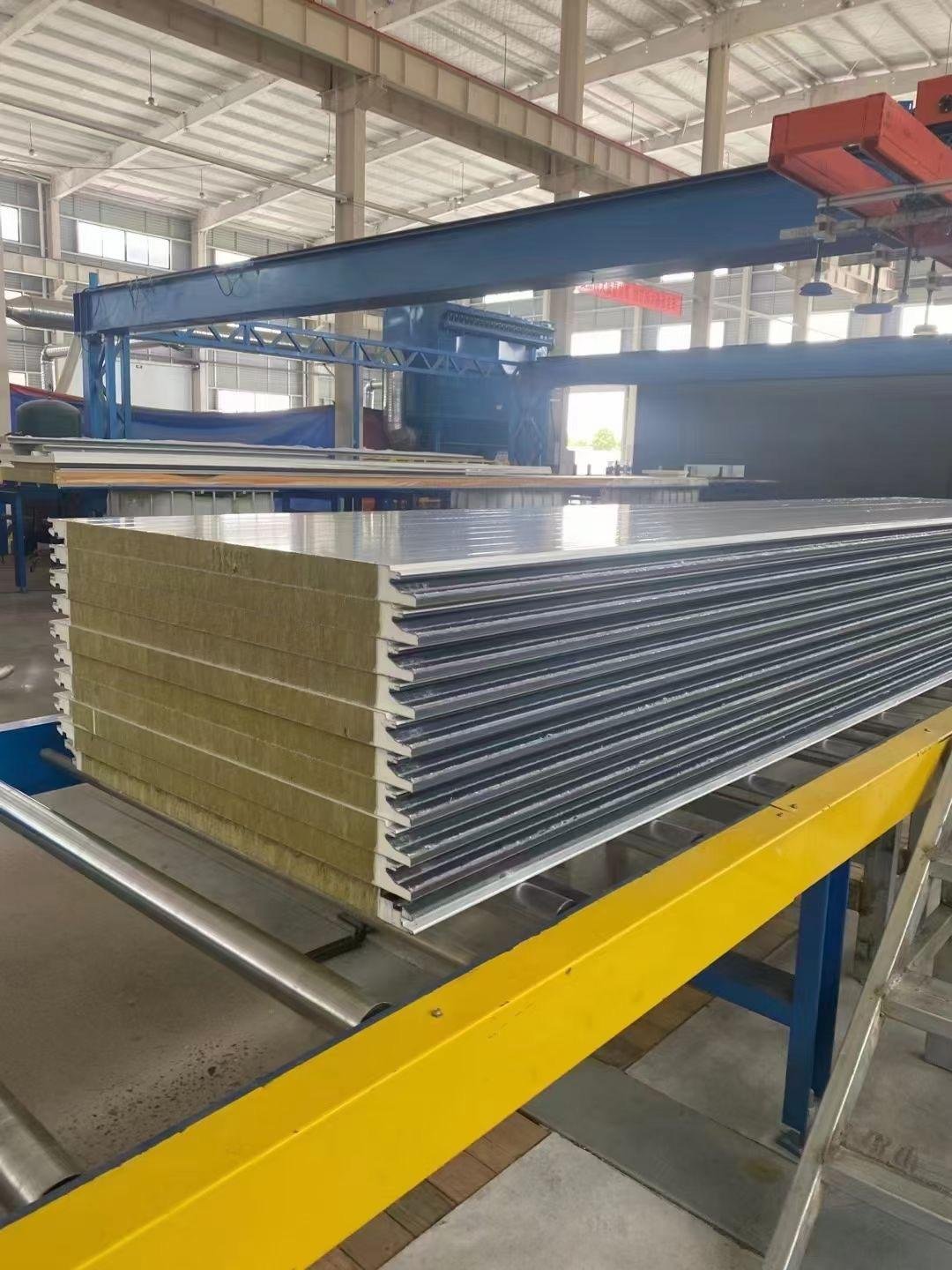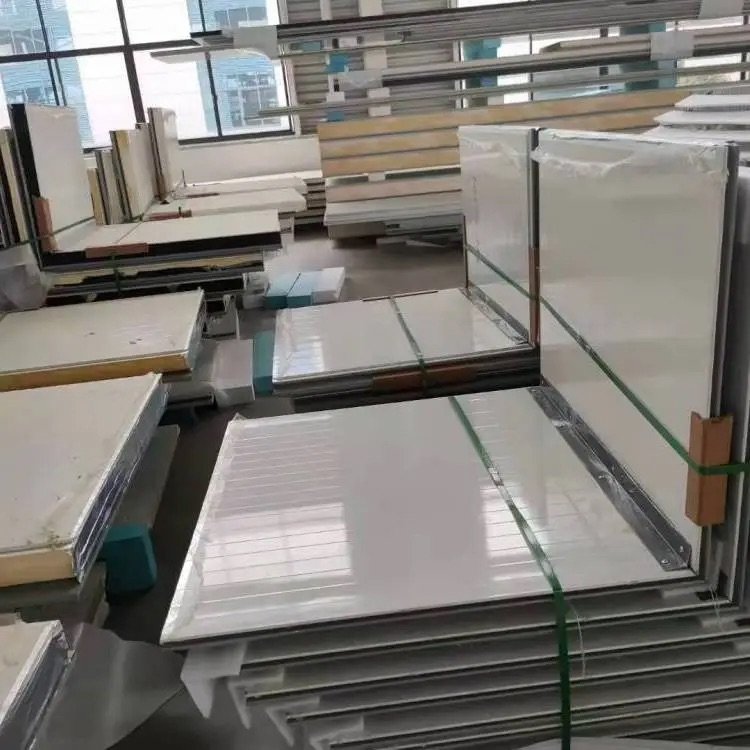
Polyurethane, or PU material, is a flexible substance used in roofs. It helps with insulation, waterproofing, and saving energy in buildings. PU roofing can lower energy costs a lot. For example, a study in New York City showed heating and cooling costs dropped by 30% after using PU panels.
ENERGY STAR says air leaks waste 25% to 40% of energy. PU materials, like spray-applied polyurethane foam (SPF), reduce this waste.
SPF also uses less fossil fuel for heating and cooling. This cuts down harmful greenhouse gases.
These benefits make PU material a smart choice for today’s roofing needs.
Key Takeaways
PU material keeps heat in or out, cutting energy bills by up to 30%. It’s a great way to save energy.
Picking PU roofing means less work. It’s strong and lasts over 30 years with little upkeep, saving you money over time.
PU material stops water and handles bad weather. It keeps your home safe from leaks and water damage, even in tough weather.
Using PU material helps the planet. It uses less energy and lowers harmful gas release, making your home greener.
PU roofing works on many roof types, like flat or sloped roofs. It’s a flexible choice for different building designs.
What is Pu Material?
Definition of Polyurethane
Polyurethane, or PU material, is a useful substance for roofs. It is made by mixing certain chemicals to form a polymer. This material can be used in many ways, like foam, coatings, or panels. It is popular in roofing because it insulates well and keeps water out. It stays strong over time, making it a dependable option for building projects.
Composition and Key Properties
Lightweight and Flexible
PU material is light, so it doesn’t add much weight to roofs. It bends easily, fitting different roof shapes and styles. This works for both flat and slanted roofs. It covers well, giving better protection and coverage.
High Thermal Resistance
A great feature of PU material is its ability to block heat. Its R-value is 6.7 per inch, showing how well it insulates. It stops heat from moving in or out, keeping homes warm in winter and cool in summer. Its closed-cell design also helps it handle temperature changes.
Waterproof and Weather-Resistant
PU material is excellent at keeping water out. It forms a layer that stops leaks and water damage. It also handles tough weather like rain, snow, and heat. A study showed a 28-year-old PU roof still worked perfectly, proving it lasts long.
Tip: Picking PU material for your roof means it will last longer and cost less to maintain.
Benefits of Pu Material for Roofing

Insulation and Energy Efficiency
Cuts energy bills
PU material can help lower your energy costs. It insulates well, so your home stays warm or cool. This means your HVAC system works less, saving money.
PU panels improve energy use in buildings.
They cut the need for heating and cooling energy.
Using less energy also reduces harmful greenhouse gases.
Choosing PU material saves money and helps the environment.
Keeps indoor temperature steady
PU material keeps your home’s temperature stable. It stops heat from escaping in winter and blocks it in summer. This makes your home cozy all year. With PU material, you won’t worry about big temperature changes.
Waterproofing and Leak Prevention
Stops water damage
PU material makes a waterproof layer on your roof. This stops leaks and protects your home from water issues. Studies show PU membranes work well in wet weather but can improve more.
Observations | Suggestions |
|---|---|
Include osmosis tests in PU membrane standards. | |
Study aging and wet exposure effects on PU membranes. | Make new PU membranes block vapor to stop blistering. |
Using PU material keeps your roof strong and leak-free, even in bad weather.
Durability and Longevity
Handles daily wear
PU material is tough and resists damage. It stands up to foot traffic, debris, and other impacts. This makes it a great long-term roofing choice.
Works in harsh weather
PU material stays strong in extreme weather. It handles heat, cold, and storms without breaking down. This ensures your roof lasts for many years.
Note: Picking PU material means getting a strong, energy-saving, and waterproof roof that lasts.
Cost-Effectiveness
Saves money in the long run
PU material roofs save money over time. The starting cost might be higher than other materials. But the savings later make up for it. Spray-applied polyurethane foam (SPF) is applied precisely, so there’s less waste. It also stops cracks, which lowers repair costs.
SPF roofs can last over 30 years with good care. This means fewer replacements and less spending overall. Plus, its energy efficiency might qualify for tax benefits, giving you more savings.
Cost Type | Description |
|---|---|
Initial Investment | PU material costs more upfront than other options. |
Maintenance Costs | Needs less maintenance over 70 years compared to other materials. |
Long-term Expenses | Fewer repairs and replacements save money over time. |
Choosing PU material helps you save on energy and repairs. It’s a smart and cost-effective roofing choice.
Eco-Friendly Features
Helps the environment
PU material makes homes greener by using less energy. Its high R-value means better insulation with less material. SPF roofs have reflective coatings that bounce heat away. This lowers cooling costs in summer. Its seamless design stops air and water leaks, improving energy use.
ENERGY STAR says air leaks waste 25% to 40% of energy. SPF insulation cuts air leaks, saving energy and reducing greenhouse gases. Making and moving SPF also uses less energy than other materials, lowering its environmental impact.
Can be recycled
Many PU materials can be recycled, making them eco-friendly. Some companies recycle PU panels and coatings to reduce waste. Choosing recyclable PU materials helps cut landfill waste and supports green building practices.
Tip: Picking PU material saves money and helps the planet at the same time.
Applications of PU Material in Roofing
Spray Foam Roofing
Easy and seamless process
Spray foam roofing uses liquid polyurethane that turns into foam. This foam spreads evenly, creating a smooth layer on the roof. It fills gaps and cracks, stopping air and water from leaking. The foam sticks to many surfaces, fitting different roof types. Its smooth finish helps prevent leaks and improves insulation.
Advantages of spray foam systems
Spray foam systems save energy well. They have a high R-value, meaning they block heat effectively. This keeps your home cozy in all seasons. Spray foam also has a low U-value, which reduces heat loss. This can save a lot on heating and cooling, especially for big buildings.
Metric | Meaning |
|---|---|
R-value | Shows strong insulation, keeping heat in or out. |
U-value | Shows low heat transfer, improving insulation. |
Energy Savings | Cuts heating and cooling costs, great for large buildings. |
Spray foam roofing is also eco-friendly. It lowers energy use, cutting greenhouse gases. Its strength and low upkeep make it a lasting, energy-saving choice.
PU Coatings
Protects roofs from damage
PU coatings shield roofs from UV rays, rain, and wind. They stop leaks and slow wear, making roofs last longer. Adding PU coatings to roof care plans can delay expensive replacements.
Coatings block UV rays, stopping roof damage.
They stay flexible, handling temperature changes and movements.
Coatings resist bad weather, keeping roofs safe for years.
Makes roofs last longer
PU coatings reflect sunlight, keeping roofs cooler and cutting cooling costs. This makes them great for hot areas. They stay strong in tough weather, keeping roofs durable. PU coatings are a cheaper option than replacing roofs, saving money for homeowners and businesses.
Feature | Meaning |
|---|---|
UV Protection | Stops UV damage, helping roofs last longer. |
Weather Resistance | Handles rain, wind, and extreme temperatures. |
Cost-Effectiveness | Cheaper than roof replacement, extends roof life. |
PU Panels
Pre-made panels for insulation
PU panels are ready-made and give great insulation. They are light but strong, making them easy to install. These panels keep indoor temperatures steady, cutting heating and cooling needs. PU panels are a smart choice for energy-saving buildings.
Used in homes and businesses
PU panels work well in homes and businesses. In factories and warehouses, they help control temperature. In homes, they save energy and stop moisture, preventing mold. Compared to EPS or mineral wool, PU panels insulate better and resist moisture more.
Feature | PU Panels | EPS and Mineral Wool |
|---|---|---|
Thermal Insulation | Excellent | Good |
Energy Efficiency | High savings on heating/cooling costs | Moderate savings |
Moisture Resistance | High (stops mold) | Moderate |
Weight | Light | Heavier |
Strength | Strong | Moderate |
Installation Ease | Easy | Moderate |
PU panels are a reliable and energy-saving option for modern roofs. They ensure long-lasting durability and cost savings.
Cost and Maintenance of Pu Material
Cost Overview
Starting cost vs. long-term savings
PU material may cost more at first. But it saves money later. It insulates well, cutting heating and cooling bills. Its smooth layer stops leaks, lowering repair costs. Some states even give tax breaks for energy-saving upgrades. This helps with the upfront cost.
Aspect | Details |
|---|---|
Initial Cost Efficiency | Can be applied over old roofs, saving tear-off costs. |
Reduced Energy Expenses | Great insulation lowers heating and cooling bills. |
Minimal Maintenance and Lifespan | Seamless design avoids leaks, lasting decades without big repairs. |
Precision Application Reduces Waste | Spray application uses less material and prevents cracks. |
Tax breaks for energy-efficient roofs help with costs. | |
Risk Mitigation | Protects buildings from bad weather, keeping property safe. |
PU material is cheaper over time than other options. For instance, asphalt membranes need more repairs, while PU roofs need less care.
What affects the cost?
The size of your roof changes the cost. Bigger roofs need more material and work. The type of PU material, like spray foam or panels, also matters. If your roof is in bad shape, fixing it first may cost more. Even with these factors, PU material saves money on energy and repairs in the long run.
Roofing Material | Initial Investment (%) | Long-term Maintenance Cost (%) | Total Life Cycle Cost (%) |
|---|---|---|---|
New Generation PVC Thermoplastic Film | Lower | Cheaper | |
Asphalt Polymer-welded Membrane | 20.03 | Higher | More Expensive |
Maintenance Requirements
Easy to maintain
PU roofs need little care, making them a good choice. Their smooth surface stops leaks and cracks, so repairs are rare. Unlike other roofs, PU roofs stay strong for decades with little work.
Maintenance depends on how the roof is used.
PU roofs can stay leak-free for 30 to 40 years.
They cost less to maintain than other roofing materials.
Regular checks for best results
Check your PU roof often to keep it working well. Inspections can catch small problems early. Cleaning off debris and checking for wear can make your roof last longer. With good care, PU roofs protect homes and businesses for many years.
Roofing Material Type | Initial Cost (% of Life Cycle Cost) | Maintenance Cost (% of Life Cycle Cost) |
|---|---|---|
Asphalt Polymer Membrane | 12.65% | Similar for ongoing maintenance |
PVC Thermoplastic Film | 20.03% | Similar for ongoing maintenance |
Tip: Regular checks and simple care keep your PU roof strong and cost-saving for years.
Is Pu Material Right for Your Roof?
Suitability Based on Climate
Great for extreme weather
PU material works well in very hot or cold places. Its high R-value of 50 gives strong insulation. It keeps homes warm in winter and cool in summer. Compared to materials like XPS or concrete blocks, PU material insulates better. Check the table below:
Insulation Type | R-value | Thermal Conductivity (λ) |
|---|---|---|
Polyurethane | 50 | 0.022 – 0.028 W/mK |
XPS | 33.5 | 0.03 W/m²K |
Concrete Block | N/A | 0.35 – 0.79 W/mK |
This makes PU material a smart pick for extreme climates.
Works in wet or dry areas
PU material is waterproof and handles all weather well. In rainy places, sloped roofs with PU coatings drain water easily. This stops water from pooling. In hot, dry areas, UV-resistant PU coatings protect roofs from sun damage.
Acrylic Coatings: Reflect sunlight, good for changing temperatures.
Silicone Coatings: Resist water pooling and stay flexible.
Polyurethane Coatings: Handle impacts, great for busy roof areas.
Fits Different Roof Types
Flat roofs
PU material is perfect for flat roofs. Spray foam fills cracks and gaps, creating a smooth, waterproof layer. This stops leaks and improves insulation. It’s a great choice for homes and businesses with flat roofs.
Sloped roofs
PU panels are ideal for sloped roofs. They insulate well and keep out moisture. Their light weight makes them easy to install. PU coatings can also be added to sloped roofs. This helps them last longer and saves energy.
Based on User Needs
Saves energy
PU material is great for cutting energy costs. PU sandwich panels stop heat loss in winter and heat gain in summer. This lowers heating and cooling bills by up to 30%. It also reduces the strain on HVAC systems, making homes more eco-friendly.

Budget-friendly over time
PU material costs more upfront but saves money later. It uses less energy and needs little maintenance. Survey data shows 67% of homeowners care about energy savings and sustainability. PU material meets these needs, offering both cost and environmental benefits.
Tip: Choose PU material for a strong, energy-saving, and affordable roof.
PU material has many advantages, making it great for roofs. Its high R-value of 50 provides excellent insulation. The low U-value of 0.02 W/m²K helps keep heat in or out. This means your home stays cozy all year. You can also cut HVAC costs by up to 30%, saving money.
Metric | Value |
|---|---|
R-value | 50 |
U-value | 0.02 W/m²K |
Cost reduction in HVAC | 30% reduction |
PU material works well with different roof styles. It is strong and lasts a long time. Picking PU material means getting an energy-saving and eco-friendly roof. Talk to an expert to see if PU material fits your roofing needs.
Tip: A PU roof saves money and makes your home more energy-efficient and green.
FAQ
How long does a PU roof last?
PU roofs can last more than 30 years with good care. Their lifespan depends on how well they are installed and maintained. Checking and cleaning them often helps them stay strong and work well for a long time.
Can PU material be used on different roof types?
Yes, PU material works for both flat and sloped roofs. Spray foam is great for flat roofs, while PU panels and coatings are better for sloped ones. Its lightweight and flexible design makes it fit many roof styles.
Is PU material good for the environment?
PU material is eco-friendly and helps save energy. It lowers greenhouse gas emissions by reducing energy use. Many PU products can also be recycled, which helps reduce waste and supports green building.
How does PU material help with energy savings?
PU material keeps indoor temperatures steady by insulating well. It blocks heat transfer, lowering heating and cooling costs. Its high R-value makes it great for saving energy and keeping homes comfortable.
Does PU material need a lot of maintenance?
No, PU material is easy to take care of. Its smooth design stops leaks and cracks, so repairs are rare. Cleaning off debris and checking it regularly keeps it working well for many years.
Tip: Talk to a roofing expert to find the best PU material for your roof.

